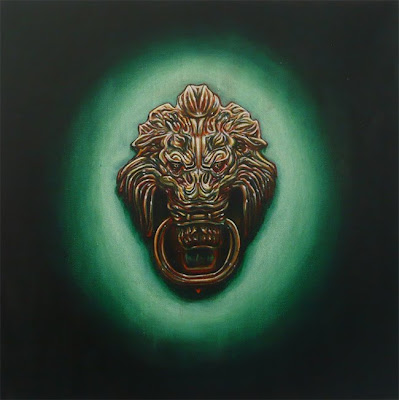

These 2 images are very low quality photos of some drawings I've made recently which will hopefully form the basis of some screenprints. They came about as I was thinking more about the idea of the Romantic Artist character that I have been putting in my paintings, and about the idea of a set of icons, mottos, motifs etc. that could be associated with these characters. The aim here was to create some tattoo designs for these artists. What sort of tattoos might they have? The second design is also based around the idea of a fictional artists' cycling club - with references to bicycle-related works by Picasso and Duchamp. This was also loosely inspired by Billy Childish's song 'Medway Wheelers' which was about a real club of that name. I suppose there's also a more general debt to Childish here as he created (or at least re-created) a sort of artist's uniform in the form of a yellow suit with an insignia.
The style of the drawings employs the linear style of Victorian illustration which seems to get used a lot in certain genres of tattooing (I'm not sure if this style was originally used in tattoos of that era, or whether it's a more recent nostalgic conflagration of the two things). I'm still thinking of how this could relate to the imagery and style of the paintings of trophies - whether the 2 things can meet or interrelate at any point.











